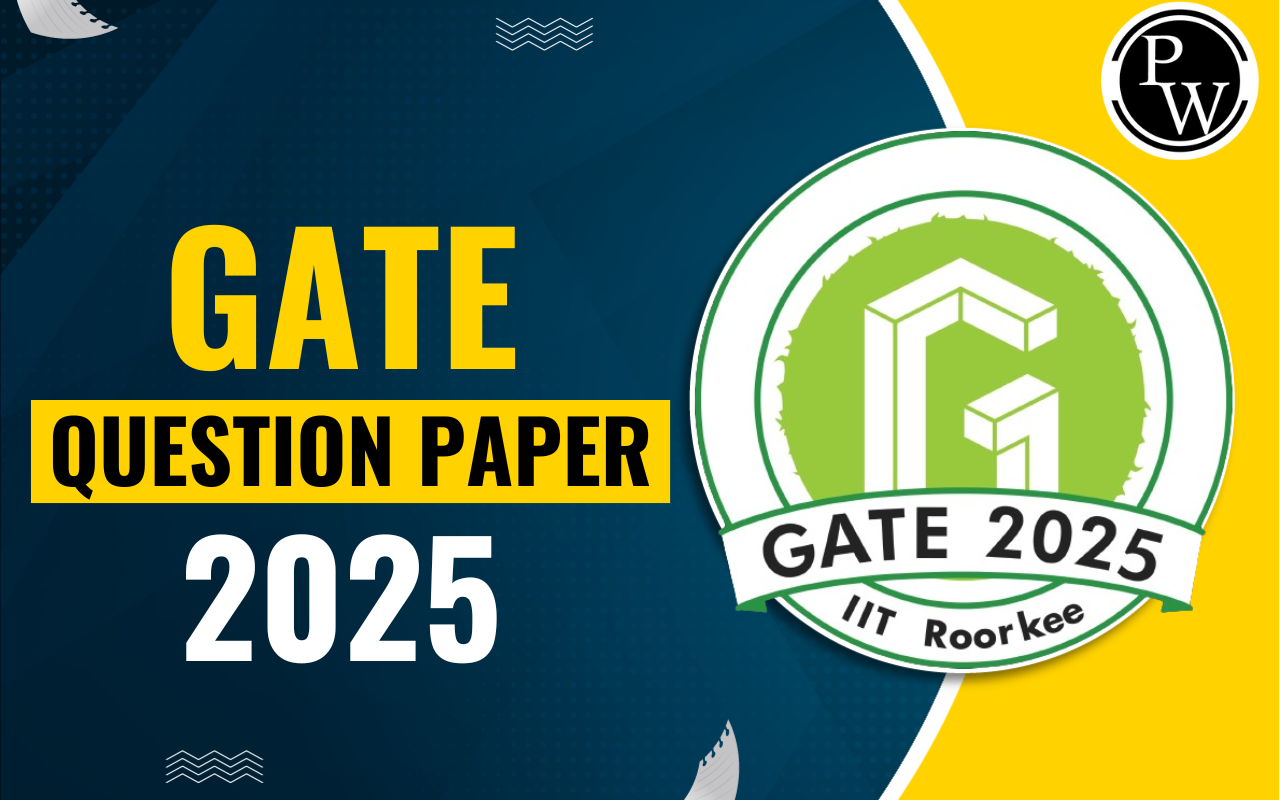
How Many Marks Required to Clear GATE? Every GATE candidate wants to know the golden question, “How many marks are required to clear the exam?” The answer isn’t fixed, as qualifying marks, admission cutoffs, and PSU cutoffs differ each year based on multiple factors.
While GATE qualifying marks decide whether you have officially passed, admission and recruitment cutoffs determine your chances of entering IITs, NITs, or top PSUs. To help you plan better, below we have provided everything - GATE passing criteria, difference between qualifying and admission cutoffs, previous year cutoffs, safe score ranges, and tips to score above the cutoff.
Check: GATE Cut Off 2025
How Many Marks Required to Clear GATE?
The marks required to clear GATE (Graduate Aptitude Test in Engineering) vary every year depending on the exam difficulty and the number of candidates participating in the GATE Examination.
Each paper has different qualifying marks, with cutoffs usually ranging between 25 to 30 marks out of 100. Candidates are advised to check the official GATE cutoff for their subject to confirm.
Check: Benefits of the GATE Exam
What Is the GATE Exam Passing Criteria?
The GATE passing criteria are based on the qualifying marks. These are the minimum marks candidates must score to be considered GATE qualified.
-
For the General category: Usually 25–30 marks (out of 100), depending on the paper.
-
For OBC-NCL/EWS: 90% of the general cutoff.
-
For SC/ST/PwD: 2/3 of the general cutoff.
This means there is no fixed pass mark; it changes every year and depends on the GATE exam difficulty.
Check: PSU Recruitment through GATE
How Are GATE Cutoff Marks Decided Each Year?
GATE cutoffs are not uncertain; they are carefully calculated each year based on multiple factors. The exam’s difficulty level, the number of candidates in the exam, and the overall performance. Check below to understand how these different things combine to decide the GATE qualifying and admission cutoffs.
-
Difficulty level of the GATE paper
-
Number of candidates appearing
-
Overall performance of candidates
-
Normalization process in the GATE Scores (for multi-session papers)
This ensures fairness in all sessions and branches.
Check: Passing Marks for GATE
GATE Qualifying Marks vs. Admission Cutoffs
Qualifying marks only determine if you have cleared the exam, while admission cutoffs decide entry into IITs, NITs, and other institutes. Check below to see how these two differ and why both are important for any candidate.
|
GATE Qualifying Marks vs. Admission Cutoffs |
||
|
Parameter |
GATE Qualifying Marks |
Admission Cutoffs |
|
Definition |
Minimum marks to pass GATE |
Marks required to secure admission in IITs, NITs, IIITs |
|
Basis |
Fixed formula, changes each year with difficulty |
Varies across institutes and programs |
|
Range |
25–35 marks (approx) |
40–70+ marks (depending on the branch and college) |
Check: Minimum GATE Score for IIT
Branch-Wise GATE Cutoff Trends
Cutoff marks differ widely from one engineering branch to another, showing competition and paper difficulty. Checking branch-wise trends helps candidates understand where they stand and what score to aim for in their subject. Check below for a detailed breakdown of recent GATE cutoff patterns in major streams to get an idea of how much preparation you need to do.
|
Branch-Wise GATE Cutoff Trends |
|||
|
Different Branches |
General Cutoff (Approx) |
OBC/EWS |
SC/ST/PwD |
|
Computer Science (CSE) |
25–29 |
22–26 |
16–19 |
|
Mechanical Engg (ME) |
27–34 |
24–31 |
18–23 |
|
Civil Engg (CE) |
26–30 |
23–27 |
17–20 |
|
Electrical Engg (EE) |
25–33 |
22–30 |
16–22 |
|
Electronics (ECE) |
26–29 |
23–26 |
17–19 |
Previous Year GATE Cutoffs
Looking at previous GATE cutoffs helps candidates set realistic score targets for their examination. These GATE cutoffs reveal how marks vary in branches and categories each year.
Check below for a quick overview of the previous year GATE qualifying marks, which can help in your preparation strategy and expected performance.
These cutoffs will help candidates prepare better for further exams and give them an idea of the competition:
|
Previous Year GATE Cutoffs |
||||
|
Year |
Paper |
General |
OBC/EWS |
SC/ST/PwD |
|
2024 |
CSE |
27.6 |
24.8 |
18.4 |
|
2023 |
ME |
28.4 |
25.5 |
19.2 |
|
2022 |
EE |
30.7 |
27.6 |
20.4 |
Factors That Affect GATE Cutoff Marks
The GATE cutoff is never fixed - it varies each year due to multiple reasons. Exam difficulty, number of candidates, and available seats all play an important role. Check the major factors that influence cutoff marks and why they change from one exam cycle to another.
-
GATE Exam difficulty – Generally, tougher exams have lower cutoffs.
-
Number of candidates appearing in the GATE Exam – More competition can push cutoffs higher.
-
Seats available in the GATE Examination– fewer M.Tech seats = higher cutoffs.
-
Reservation policies in the examination– Influence category-wise cutoffs.
How Many Marks Are Safe to Score in GATE?
Simply clearing the GATE exam is not always enough for top institutes or PSU jobs. Candidates often aim for a safe score well above the GATE qualifying cutoff. Check below to see the range of marks considered safe for securing IIT/NIT admissions and PSU recruitment opportunities.
-
To just qualify for the GATE exam: ~28–32 marks.
-
For NIT admission: 40–50 marks (varies by branch).
-
For IIT admission: 55–65+ marks.
-
For PSUs: 65–80+ marks (depending on company and stream).
Difference Between GATE Qualifying Marks and PSU Cutoffs
Clearing the GATE does not automatically guarantee a PSU job to any candidate. While qualifying marks define the minimum score to pass the exam, PSU cutoffs are much higher and are used for shortlisting candidates in the recruitment process in 2025. Check below to understand how these two differ and why both matter for candidates.
|
Difference Between GATE Qualifying Marks and PSU Cutoffs |
||
|
Aspect |
GATE Qualifying Marks |
PSU Cutoffs |
|
Purpose |
Passing the exam |
Recruitment shortlisting |
|
Marks Required |
25–35 approx |
65–80 plus (varies) |
|
Usage |
Higher studies, eligibility |
Direct job offers in PSUs sector |
Tips to Score Above the GATE Cutoff
Scoring above the GATE cutoff requires smart preparation and consistent practice. From focusing on high-weightage topics to mastering time management, the right approach can increase your chances.
Check below for practical strategies that will help you not only clear the exam but also aim for top scores:
-
Prioritize high-weightage subjects in the GTAE Examination (like Networks in EE, DBMS in CSE).
-
Solve the GATE previous year papers to identify questions asked in the examination.
-
Take mock tests to practice time management for the exam.
-
Revise formulas and short tricks regularly before the GATE exam.
-
Focus on accuracy as negative marking can reduce your score in the GATE examination 2025.
Elevate your GATE readiness with Physics Wallah’s GATE Online Courses. PW GATE Online Coaching offers comprehensive live sessions tailored to the syllabus, invaluable study materials, practice tests, and much more.
How Many Marks Required to Clear GATE? FAQs
How many marks are required to pass the GATE exam?
Do qualifying marks guarantee admission in IITs or NITs?
How many marks are safe to score in GATE for top institutes?
What is the cutoff for PSU recruitment through GATE?










